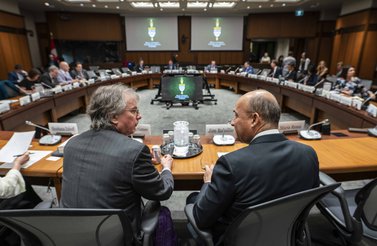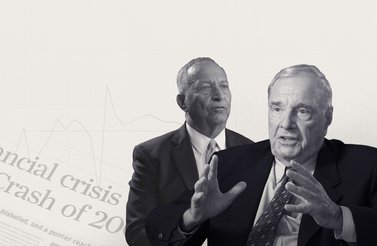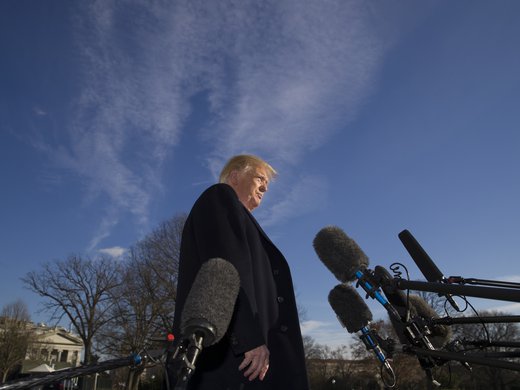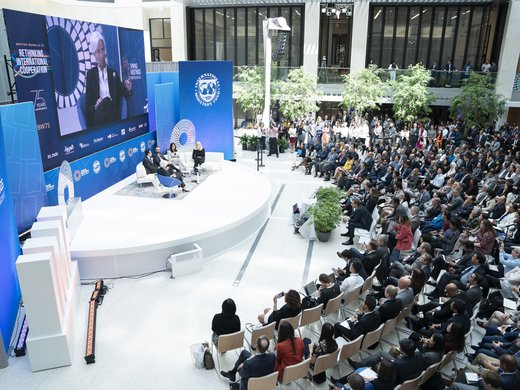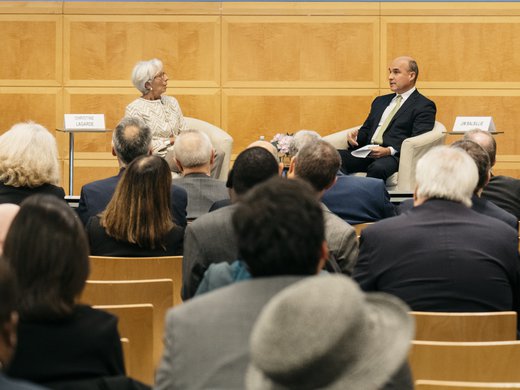This month marks the seventy-fifth anniversary of the Bretton Woods conference at which the International Monetary Fund (IMF) and its sister institution, the International Bank for Reconstruction and Development (the World Bank’s original name), were born. Conceived by the great British economist John Maynard Keynes, and co-created with Harry Dexter White from the United States Treasury, the IMF had a lengthy gestation period during which Keynes’ initial ambitious plans for postwar global finance collided with the reality that the United States would dictate the terms of any agreement. As a ditty that circulated at the time put it, in the debate between White and Keynes, the United States had all the money, but the United Kingdom had all the brains. This is unfair to White, though it captures the essential truth that in July 1944 the United States exercised enormous power.
The Bretton Woods conference and the institutions that emerged from it laid the foundations for international cooperation and the rules-based order that has served successive generations so well. Together, the IMF and the World Bank helped change the way people view the global economy. The international financial “architecture” represented by the two institutions transformed the global economy from the zero-sum game perspective of the Great Depression (with its use of beggar-thy-neighbour policies designed to increase domestic employment by spreading economic stagnation abroad) into a positive-sum game that benefits all who adhere to the rules and respect the obligations of membership.
Institutions must evolve in response to changes in their environment. If they do, they can remain relevant. If, however, they fail to adjust, they risk irrelevancy and being relegated to the dustbin of history.
But those institutions — like any — must evolve in response to changes in their environment. If they do, they can remain relevant. If, however, they fail to adjust, they risk irrelevancy and being relegated to the dustbin of history. This risk is greater still given the threat to the rules-based order posed by the current US administration, which consciously or unwittingly seeks to return to a zero-sum game.
On this seventy-fifth anniversary of the Bretton Woods conference, it’s worth asking if the International Monetary Fund can — or should — evolve for a twenty-first century economy.
The IMF’s Mission
To begin, consider the IMF’s original raison d’être. Historically, the Fund was synonymous with the system of fixed exchange rates that prevailed during its first quarter century or so. Its role was to police the system, ensuring that members did not violate the rules governing exchange rates and providing short-term balance of payments support to smooth adjustment to terms of trade or other shocks. That system collapsed under the weight of not only its own success in facilitating global growth but also the inherent inconsistencies of the system itself, which required the United States to supply a constant stream of dollar-denominated assets tied to the price of gold; eventually the stock of those obligations exceeded the value of gold in the vaults at Fort Knox. The coup de grâce came in the form of large oil price shocks that disrupted the balance of payments and made the system unsustainable. By 1973, fixed exchange rates were abandoned.
Based on that original mission, the Fund is now irrelevant. Most countries — certainly large advanced countries — have had flexible exchange rates for almost a half century. If the IMF was created to support fixed exchange rates, it is well past its expiration date. However, that is far too narrow an interpretation of the mandate.
The Fund is properly evaluated in terms of the support it provides to cooperative solutions to international problems. Such outcomes improve upon so-called non-cooperative equilibria, in which each “player” attempts to maximize their own interests, by making all participants better off (the positive-sum game outcome). But cooperative outcomes are unstable because individual countries will have an incentive to defect from them; they need some mechanism to monitor and enforce adherence.
In this respect, while the Fund’s role in policing the Bretton Woods system of fixed exchange rates is now anachronistic, the Fund remains a key partner in supporting cooperative efforts to promote growth and preserve international financial stability. At the height of the global financial crisis, the IMF’s role of global crisis manager led it to coordinate international efforts to combat financial dysfunction and economic collapse. As Daniel Drezner argued in his 2014 book, the system worked.
The Challenges Ahead
This success doesn’t mean that the Fund can’t do more, in particular, with respect to policing exchange rates. Frankly, if it doesn’t do more, it runs the risk of irrelevancy. The current US administration is intent on weaponizing exchange rates in its trade war against foreign competition. Exchange rates are determined in global markets and reflect a host of factors. They are, as economists are fond of saying, determined in general equilibrium, while trade imbalances are inherently multilateral in origin. US efforts to unilaterally police exchange rates could further undermine the rules-based trading system.
Preventing countries from engaging in currency manipulation in support of trade liberalization was, in fact, a key objective of the IMF: countries would be loath to lower trade barriers and absorb the associated adjustment costs if others could gain an unfair competitive advantage through currency manipulation.
The original fixed exchange rate system was a safeguard against such practices; it has been replaced with members’ commitments to not manipulate their currencies. However, for much of the past half century, the IMF has struggled to enforce these commitments. In part, its difficulties reflect the analytical challenges of defining “equilibrium” exchange rates in a flexible exchange state world. They also reflect shifting balances of power in the global economy and the unique role of the US dollar as the international reserve asset and global medium of exchange.
As China has grown in importance, the IMF’s capacity to influence policy through moral suasion has declined. And in the absence of a clear and widely accepted definition of an appropriate level for the exchange rate, the Fund’s influence is limited.
At the same time, there is the fundamental issue of who should bear the burden of adjustment. The rules of the IMF, going back to the foundational debates between Keynes and White, are clear: countries with balance of payments deficits must reduce consumption, investment and government spending—what economists refer to as “absorption”—to reduce their deficits. Meanwhile, countries with current account surpluses were largely relieved of any responsibility for adjustment. White insisted on this rule, fearing the potential inflationary consequences of and implications for the US creditor position of Keynes’s proposal that creditor countries share in the adjustment. In any event, for much of the past 75 years the United States has been able to evade adjustment by virtue of the dollar’s role in the global economy. As John Connally, a former US Treasury secretary, told his European counterparts when they raised concerns over growing US deficits nearly 50 years ago, “The dollar is our currency, but it’s your problem.”
This exorbitant privilege, as the benefit of the US dollar’s status has been described, has been the source of considerable resentment over the years. Not surprisingly, it fuelled complaints that there were two sets of rules governing global finance. Such complaints multiplied with the move to flexible exchange rates. It soon became clear that large industrial countries with uninterrupted access to global capital markets would not need to call on the IMF for financial support. In contrast, developing countries and emerging market economies subject to fickle capital flows are subject to the bitter medicine prescribed by the Fund when their contingent and precarious access to capital markets is lost. In the wake of the Asian financial crisis, many argued that the IMF was acting as debt collector for rich country creditors.
The Asian financial crisis revealed the extent to which global capital markets had evolved and how the international framework for dealing with sovereign debt crises had not. At its core, the crisis reflected the impact of capital account liberalization, as countries opened their economies to short-term foreign capital flows. Yes, the subsequent reversal of capital flows was undoubtedly exacerbated by inadequate regulation and weak policy frameworks. But the simple fact is that the system of international adjustment created by Keynes and White, which put the IMF at the centre of the system, was built around capital controls. Because of those controls, balance of payments problems were contained to a few percentage points of GDP — the difference between national savings and investment rates — and unfolded slowly over a number of quarters.
In contrast, the capital account crises of the twenty-first century (as former IMF Managing Director Michel Camdessus referred to the Asian financial crisis) were in the double digits and erupted overnight. They were more akin to panicked bank runs, for which existing crisis management protocols were not designed. As a result, the Fund was less able to assist its members to strike a felicitous balance between “financing” and “adjustment,” as it had been able to do in the halcyon days of the Bretton Woods system. The key lesson, as former Canadian prime minister (then finance minister) Paul Martin said, was the need to “complete” Bretton Woods by erecting a framework for the timely, orderly restructuring of sovereign debt and equipping small countries to better manage fickle short-term capital flows. The IMF has made important progress toward this objective over the past two decades, but the framework remains a work-in-progress.
The fact that the Fund was unable to assist its members to the extent they thought appropriate animated intense introspection and debate over its governance arrangements. Two decades later, that debate continues.
Governance That Reflects the Modern Economy
At the risk of reducing the issue at hand, the IMF faces a single, simple question: do existing governance arrangements reflect the global economy of the mid-twentieth century or the realities of the twenty-first century? Although some rebalancing of quota shares — which determine voice and voting power, as well as access to Fund resources — has taken place, there is much more to be done if the IMF is to remain relevant. If action isn’t taken to redress governance issues, it is possible that the legitimacy of the IMF as an arbiter of cooperative solutions to global problems would be eroded.
There are already worrying signs of this effect in the growth of regional arrangements for the sharing of reserves in times of financial stress. Such arrangements have increased in the period following the Asian financial crisis. The benign view of them is that they are a useful complement to the IMF.
The Fund is more relevant and needed now than it has been at any other time in the past 50 years...
A more troubling perspective is that these arrangements could erode the shared commitment to the obligations and responsibilities associated with the prudent stewardship of the global economy. In any event, while they may be of some use in dealing with idiosyncratic shocks to a member country, regional reserve-sharing arrangements would be wholly ineffective in the event of a systemic shock; in that situation, instinctual self-preservation would override any sense of fraternal commitment to lend reserves to one’s neighbour. The only institution that can adequately deal with these shocks is one with universal membership and the potential to create reserves in exigent circumstances, such as the increase in IMF special drawing rights authorized by the 2009 Group of Twenty Summit.
Similarly, efforts to self-insure against global shocks by accumulating reserves, while understandable, are inconsistent with an underlying role of the IMF. Keynes wanted to free the global economy from the constraints of the dysfunctional inter-war gold standard and the requirement that countries hold gold reserves, which he referred to as a “sterile” asset. By breaking these “golden fetters,” countries could avoid the perversity of forcing austerity on countries already in depression. Today, the opportunity cost of reserves held in low-yielding assets can be measured in terms, say, of the investments in public education, health care and infrastructure that are forgone.
An additional dimension to this issue is that reserve accumulation can be indicative of concerted efforts to thwart exchange rate adjustment. And there is little doubt that US concerns regarding currency manipulation are related to the buildup of reserves around the globe. This is a problem, since a unilateral approach to exchange rate surveillance by the United States could gravely weaken the credibility of the Fund. But IMF members are unlikely to eschew reserve accumulation to self-insure against fickle capital flows if the framework for sovereign debt restructuring is incomplete or if they believe that the governance structures of the institution at the core of international crisis management do not adequately reflect their role in the global economy.
These considerations point to a troubling scenario for the global economy: It is possible that, if the current US administration continues to undermine the rules-based system for international finance, trade and security, the global economy will fracture into regional trading blocs, each based on a dominant currency, with relative openness among members but protectionist trade barriers between blocs. That outcome prevailed in the 1930s; it led to a zero-sum perspective of the global economy that weakened international security and ultimately contributed to global war. It was what Keynes and White struggled to prevent at that remarkable conference 75 years ago.
Blueprints for a Twenty-first Century Architecture
Arguably, the Fund is more relevant and needed now than it has been at any other time in the past 50 years, given the current threats to the rules-based order posed by a worrying rise in economic populism and political nationalism. To be sure, the international financial architecture created at Bretton Woods had clear economic and financial objectives. But it also had the political objective of supporting democratic governments in their efforts to maintain full employment in an uncertain global environment. That goal remains the core of the Fund’s mandate.
Yet, to remain effective, the Fund and its members must renovate that architecture to bring it up to date. The blueprints for such a retrofit have three critical elements. First, IMF members must agree to a new framework for exchange rate surveillance, one that recognizes the multilateral origins of payments imbalances and the general equilibrium nature of exchange rate determination. Second, work must continue on improving the framework for sovereign debt restructuring. Third, the governance arrangements of the IMF have to reflect the realities of today, and that means more has to be done to align quotas with the shifting balance of power in the global economy.
While the challenges are great, so too are the stakes. Of the three objectives, the third is perhaps most difficult, given the zero-sum nature of realigning quota share: someone’s gain is inevitably someone else’s loss. That feature is indeed an obstacle. However, embedding governance reforms in a broader package of measures to strengthen exchange rate surveillance and facilitate the orderly restructuring of sovereign debt would address gaps in the rules-based system, creating a positive-sum game, and could ensure that necessary change is made.
Strengthening exchange rate surveillance has to be the starting point. The IMF would need to get members to agree on indicators of reserve adequacy and equilibrium exchange rate levels. This would need to be coupled with clear rules on adjustment and the evidentiary threshold required for IMF enforcement. These rules are necessary, since some indicators would inevitably give conflicting signals.
Moreover, the issue of burden of adjustment must be revisited so that the rules of the game reflect the current realities of the global economy. In theory, flexible exchange rates spread the adjustment burden between surplus countries (where currencies appreciate) and deficit countries (where currencies depreciate). In practice, however, this symmetry can be broken by reserve accumulation that animates concerns of currency manipulation or sustained mis-pricing by currency markets. Such effects can propagate the build-up of risks to individual countries and the system writ large. This, in turn, leads to the loss of global effective demand as savings in surplus countries accumulate, which can prolong economic recession in periods of weak activity. These effects are the modern counterpart to the inter-war dysfunction that animated Keynes’ efforts at Bretton Woods and may help explain the slow recovery from the global financial crisis.
The resulting system would undoubtedly lack the simplicity of the Bretton Woods rules on fixed exchange rates, but it would be an improvement over the present situation in which, lacking the guidance of clear rules to enforce, IMF surveillance can be dismissed as not impartial.
Moreover, progress on this front could animate efforts with respect to the other elements of the blueprints for architectural reform. In this respect, on the seventy-fifth anniversary of its founding, revitalizing the Fund and “completing Bretton Woods” would be a fitting tribute to the men and women who created the IMF and built the postwar order that has been the wellspring of prosperity for successive generations.
